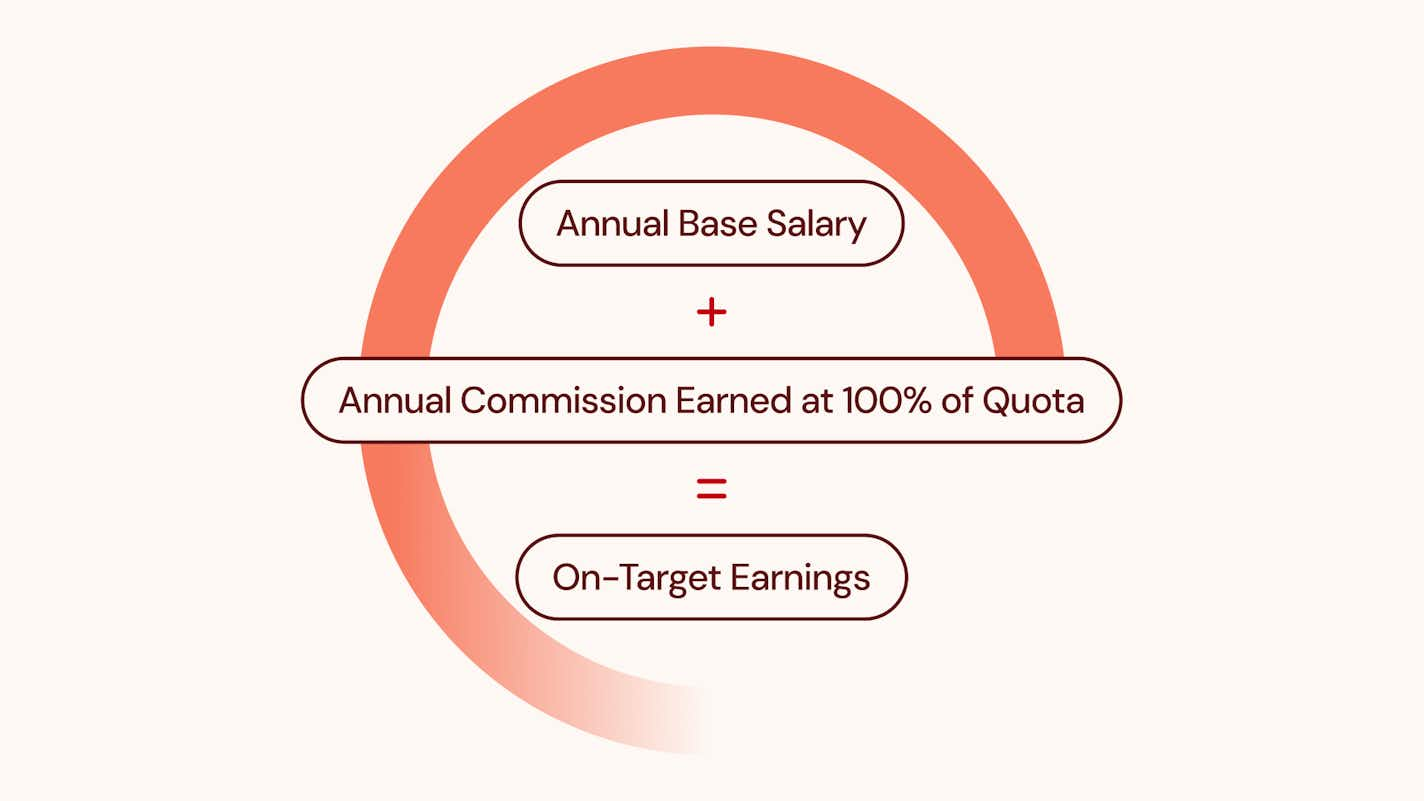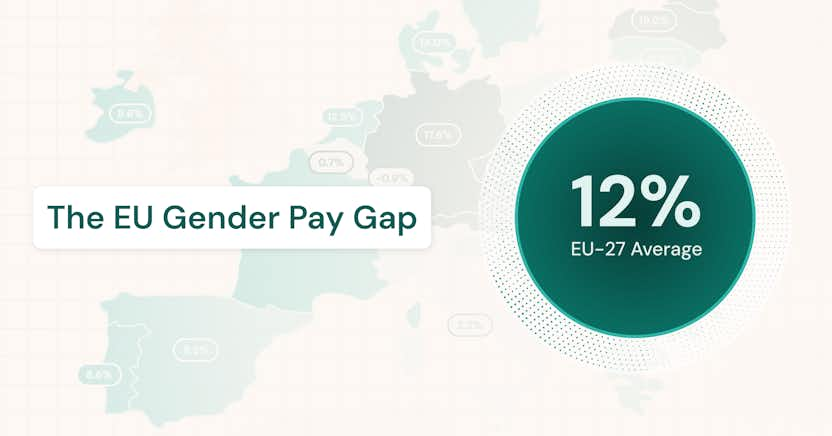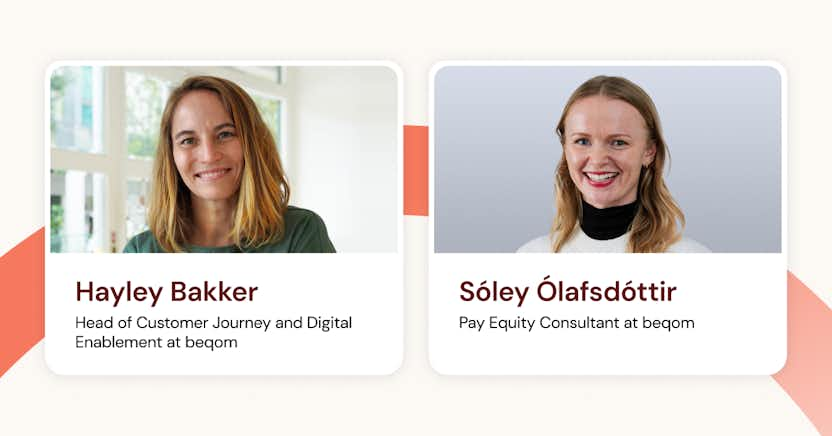Maximizing Employee Productivity with OTE Compensation Plans

Learn more about the following beqom products
On-track or on-target earnings (OTE) compensation significantly influences employee productivity by directly tying financial rewards to performance goals. Not only does it motivate employees to achieve and exceed their targets, it also aligns their efforts with the company's objectives.
Providing a transparent route to increased earnings for exceptional achievements, OTE encourages a workforce that is both driven and productive, building an ethical culture of engagement and motivation. This results in increased organizational growth, as motivated employees are more likely to contribute to the company's success through higher sales, improved customer satisfaction, and innovative solutions.
Effective OTE compensation plans enable companies to promote a highly motivated workforce that is directly invested in the achievement of organizational goals, thereby creating an ideal situation where both the company and its employees benefit.
What is OTE?
On-track or on-target earnings (OTE) is a compensation model that combines a base salary with potential bonuses or commissions earned by achieving specific performance targets. This model is prevalent in roles where employee performance directly impacts company revenue or success, providing a clear, incentive-driven path to higher earnings based on individual or team accomplishments. Professions commonly employing OTE models include:
- Sales, where representatives might earn commissions on deals closed;
- Retail, with incentives for surpassing sales quotas;
- Marketing, where performance could be tied to campaign success or lead generation metrics.
OTE structures can be either capped or uncapped. In a capped model, there is a maximum limit on the amount of commission or bonuses an employee can earn, regardless of performance exceeding targets. Conversely, an uncapped OTE model allows employees to earn beyond their projected earnings without a ceiling, offering potentially unlimited compensation based on their success. This flexibility allows companies to tailor the OTE model to their strategic goals, motivating employees while aligning their efforts with the organization's objectives.
How to calculate OTE
Calculating OTE involves summing the base salary with potential commissions or bonuses that an employee can earn by achieving specific performance benchmarks within a set period. Begin by pinpointing the fixed annual base salary that the employee is guaranteed. Then, estimate the annual commission that the employee earned at 100% of quota. The final step is to sum these two components together to calculate the OTE:

Calculating On-Target Earnings
The benefits of using an OTE commission structure
The benefits of employing an On-Target Earnings (OTE) commission structure within your organization are multifaceted and impactful. By integrating a well-managed sales compensation system, businesses can leverage the advantages of OTE to foster a more productive, motivated, and strategically aligned workforce. Here's how:
Boosts employee motivation
One of the most significant advantages of an OTE commission structure is the boost in employee motivation it drives. Clear goals and a direct connection between their achievements and rewards provide employees with empowerment over their income, fostering a sense of ownership and motivation in their work. Such transparency and fairness in reward distribution encourage employees to put in their best effort, knowing that their achievements directly impact their compensation.
Contribution to organizational growth
Improved employee performance naturally leads to organizational growth. As employees become more motivated to reach and surpass their targets, businesses will see an uptick in sales, productivity, and efficiency. This direct correlation between OTE compensation and business outcomes means that as your team succeeds, so does your business, creating a cycle of positive growth and performance improvement.
Increased talent attraction and retention
Attracting and retaining top talent is key. Competitive OTE packages serve as a significant draw for industry-leading professionals looking for opportunities where they can maximize their earnings based on performance. Furthermore, a well-structured OTE plan demonstrates your company's commitment to fair and performance-based compensation, helping to retain high performers who might otherwise seek opportunities where their efforts are more directly rewarded.
Improved resource allocation
The data-driven nature of OTE commission structures offers another layer of strategic advantage: improved resource allocation. By tracking performance metrics closely tied to compensation, organizations can make more informed decisions about where to allocate resources, invest in additional support, or adjust strategies to maximize efficiency and effectiveness. This ability to dynamically respond to performance data ensures that resources are always directed where they can generate the most significant impact.
Designing your OTE plan
Designing an effective On-Target Earnings (OTE) plan is a crucial step towards aligning your team's motivations with the strategic goals of your organization. Here are the key components of crafting a successful OTE plan:
1. Set base salaries
Setting base salaries is the cornerstone of your OTE plan, providing employees with a dependable income foundation. Compensation management software enables informed decisions by analyzing market trends and salary benchmarks. This strategic approach ensures competitive and equitable salaries, essential for attracting and retaining talent.
2. Calculate the OTE percentages
Calculating OTE percentages involves determining the balance between base salary and performance-based commissions within an employee's compensation package. For example, if an employee has a base salary of $50,000 and can earn $30,000 in commissions by meeting 100% of their sales targets, their OTE would be:
OTE= $50,000 + $30,000 = $80,000
From the perspective of an employer, offering a higher fixed salary versus more variable compensation like commissions has its own set of advantages and drawbacks. A higher fixed salary can attract candidates who value financial stability and can lead to a less stressed and more collaborative work environment. However, it might reduce the motivation to exceed targets and increase the company's fixed costs, which can be risky if revenue dips.
The OTE percentage structure varies across different industries, reflecting the balance between base salary and commission to motivate and compensate salespeople effectively:
- 90/10: Primarily base salary with a small commission component, tailored for non-sales staff in roles where sales contributions are occasional or targets are non-financial
- 70/30: Favors a higher base salary with commission, best for selling complex products with long sales cycles, like software or financial services
- 50/50: Balances base salary with commission, suitable for starting pay structures in sales, allowing performance-based adjustments
- 0/100: Purely commission-based, ideal for self-driven salespeople in environments like high-end retail, offering 5-10% commissions with no base salary
For instance, the average OTE compensation for sales representatives in the U.S. is $140,000 annually, with a compensation breakdown of 69% base salary and 31% variable compensation. This equates to roughly $96,600 as the base salary and $43,400 in commission or bonus pay.
A more commission-oriented structure may boost motivation and align payroll costs with actual business performance. Yet, it could also lead to an uncertain financial situation for employees, potentially fostering a competitive atmosphere that might not suit all team dynamics. Moreover, in times of low business performance, it could negatively affect morale since the pay depends on meeting targets, which might be beyond the employees' control due to market conditions or other external factors.
3. Establish a timespan
Establishing a timespan for achieving On-Target Earnings (OTE) is essential in setting clear goals and expectations. This timeframe could be aligned with the fiscal year, quarterly, monthly, or even tailored to specific sales cycles. Deciding on the right timespan depends on your business operations, sales processes, and how frequently you want to evaluate and incentivize employee performance. Choosing an appropriate period helps in creating realistic goals, ensuring employees are motivated and rewarded in a timely manner, and aligning sales efforts with broader company objectives.
4. Consider non-financial compensation
Incorporating non-financial compensation into your OTE plan enriches the overall package, making it more appealing. Benefits like flexible working hours, opportunities for professional growth, wellness initiatives, and recognition programs can significantly boost job satisfaction and employee loyalty. Such incentives complement monetary rewards by addressing personal and professional needs, enhancing the desirability of the compensation plan.
5. Implement performance-tracking systems
Implementing performance-tracking systems is a crucial step in managing and optimizing your team's sales efforts. By leveraging sales performance management software, you can efficiently oversee sales operations, keep track of progress toward objectives, and evaluate performance patterns instantly. This not only enhances accountability and motivation among your sales team but also allows for strategic adjustments to be made swiftly, ensuring your sales operations are as efficient and effective as possible.
Create an impactful OTE structure with the right software
Software, particularly sales performance management and workforce analytics tools, is instrumental in crafting an effective OTE plan. These technologies streamline the design process, ensuring that compensation structures are both competitive and aligned with company goals.
Compensation management solutions enable businesses to set precise targets, analyze performance data, and make informed adjustments to OTE components. Additionally, incorporating workforce analytics allows for deeper insights into how compensation impacts employee motivation, retention, and overall productivity, reinforcing the benefits of a well-executed OTE strategy.
Ready to optimize your compensation strategy? Contact us and explore how we can help you manage your OTE plan.
FAQs
What is a good OTE percentage?
The ideal split between salary and commission or fixed versus variable compensation depends largely on the role, industry, and specific goals of the organization. Generally, a common structure for sales roles is a 60/40 split, where 60% is the base salary and 40% is variable commission. However, this can vary significantly.
Some companies might offer a 50/50 split to heavily incentivize sales performance, while others may opt for a higher base salary, like an 80/20 split, to provide more financial security to employees. The key is balancing motivation with stability to align with both employee needs and company objectives.
Can OTE plans be customized for different roles?
Yes, OTE (On-Target Earnings) plans can indeed be customized for different roles within a company. OTE plans are a part of compensation structures, particularly in sales and roles with variable compensation components, that define the total potential earnings an employee can achieve if they meet certain performance targets.
What tools can help manage OTE plans?
Managing OTE plans efficiently requires tools that offer flexibility, real-time data analysis, and integration with other business systems. Here are some of the key categories of tools that can assist with managing OTE plans: Compensation Management Software, Customer Relationship Management (CRM) Software, Human Resource Information Systems (HRIS), Business Intelligence (BI) and Analytics Tools, Spreadsheets and Custom Solutions, and Payroll Software.
Find out how beqom can make it easy to design OTE comp plans that get results.







